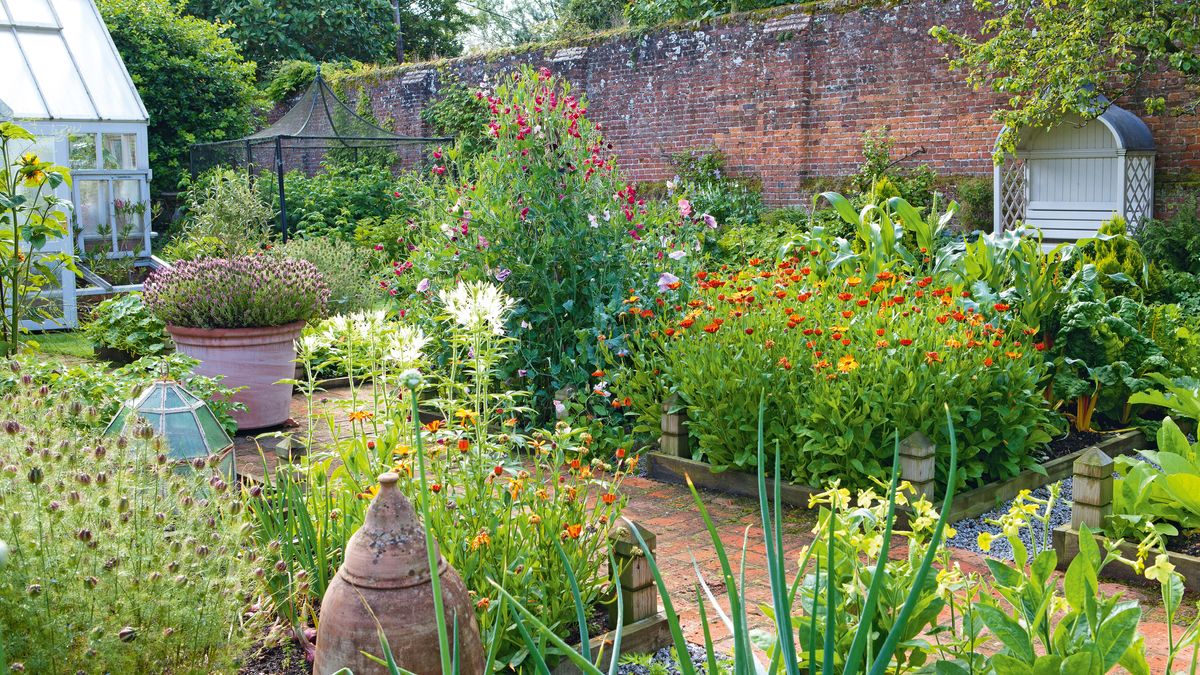Types of kitchen garden ,A kitchen garden, also known as a vegetable or herbal garden, is key to promoting sustainability and healthy eating.
These gardens can range from small balcony setups to larger backyard plots, providing fresh ingredients for meals.
They support a self-sufficient lifestyle and allow for growing a variety of edible plants, herbs, and vegetables.
This article explores different types of kitchen gardens, highlighting designs and approaches that suit various spaces and lifestyles.
Whether for cooking or relaxation, a kitchen garden can improve any home.

Types of Kitchen Garden
In a world increasingly leaning towards sustainability and healthy living, kitchen gardens have become popular among both seasoned gardeners and novices alike.
These gardens, often referred to as vegetable or herbal gardens, serve as valuable resources for cultivating fresh ingredients at home.
Let’s explore the different types of kitchen gardens, their benefits, and how they can be designed for various spaces such as balconies or backyard plots.
A Flavorful Addition
Herbal gardens are made to grow herbs that enhance the flavor of dishes and offer health benefits. Common herbs include basil, parsley, cilantro, rosemary, thyme, and mint.
These herbs are easy to grow and thrive in different environments, making them perfect for small spaces.
Herbal gardens can be maintained in containers on a balcony or patio, making efficient use of limited space.
Herbs can elevate simple dishes, from salads to sauces. Many herbs also have therapeutic benefits, like lavender for relaxation and chamomile for calming, making herbal gardens great for both taste and well-being.
Vegetable Gardens
Vegetable gardens provide fresh produce for daily meals. They can range from small plots to large backyards with vegetables like tomatoes, cucumbers, carrots, and leafy greens.
Growing your own vegetables is rewarding. They taste better and are free from harmful pesticides often found in store-bought produce.
For limited spaces, balcony gardens can use vertical gardening techniques. Planting racks, wall-mounted pots, and hanging baskets allow gardening in small urban apartments.
By choosing compact or high-yield plants, urban gardeners can enjoy fresh produce year-round.
Aesthetics and Utility
While kitchen gardens mainly focus on growing edible plants, adding flowers can enhance the garden’s appearance.
Flowers like nasturtiums and marigolds do more than decorate—they can repel pests and attract beneficial insects like pollinators, improving garden health.
Mixing flowers into a kitchen garden creates a beautiful and functional space.
For example, border flower beds can frame vegetable plots, or flowers can be added between vegetable rows for a colorful look. This design not only brightens the garden but also supports a diverse ecosystem.

Key Designs Of Kitchen Gardens
Raised Bed Gardens: These gardens use a wooden or stone frame to hold soil, raising the plants for easy access. They are perfect for areas with poor soil, offering better drainage and more control over the growing conditions.
Container Gardens: Ideal for balconies or patios, container gardens let people grow herbs, vegetables, and flowers without needing a large garden space. Choosing the right containers is important for root space and drainage.
Vertical Gardens: Vertical gardens make the most of limited space. Using trellises, shelves, or wall grids, you can grow climbing vegetables like beans and peas, or cascading herbs like thyme and oregano.
